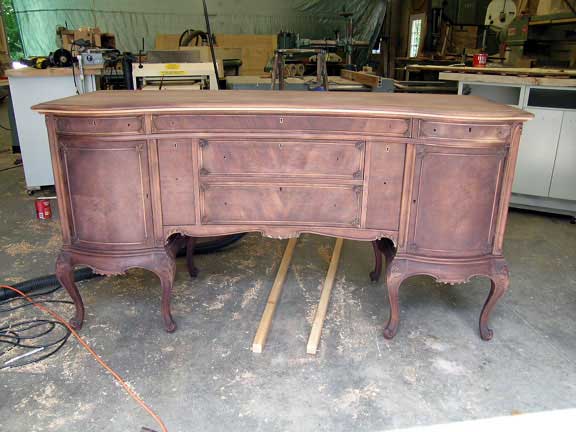Question
I am producing base and case mouldings on a RBI moulder with a three knife head (specially treated HSS, not carbide.) The finish out of the moulder is good, except for small pitting.
What products/techniques are you using to finish this "super refined" Plum Creek MDF2? Iím using ML Campbell's Magnalac primer/undercoat, and white pigmented Magnalac, with poor results. The uneven finish is due to the character of my substrate.
Would a Fladder sander or profiled wheel make a significant difference in my end product, sanding both prior to and between finish coats? Or is there a better primer on the market, that will build and sand better than the Campbell product (the primer is an easily sandable nitrocelluose, the pigmented pre/cat Magnalac is not so easily (hand) sandable).
Forum Responses
Campbell has a catalyzed primer undercoater specifically for MDF, called Clawlock. It builds nicely, spraying two coats reduced to 20-25 seconds on a ford #4 cup. Spray on wet mil about 3-5. Sand with a semi-worn sheet of 320 grit paper and recoat. Once the surface is smooth and free of any imperfections, spray with Resistant, a catalyzed finish from Campbell. Use your supplierís sheet, which covers the specifics on this finishing schedule. The catalyzed finish is potent--be careful.
With two coats of Clawlock, is the surface completely white or is there still some tan from the substrate showing through?
We are sanding the substrate prior to the Clawlock with a Klingspor "Mac Mop" flap sander at 180 grit, powerfed slow enough to get maximum sanding without losing any detail.
The painters say this sanding yielded little effect on the ease of build coats. The porosity of the MDF seems to be the culprit.
You will see some of the tan showing through. Be careful to not sand through the coating. Sanding is imperative to knock down grain raise and to assist with the adhesion of subsequent coats.
Comment from contributor A:
Instead of the MDF that you are currently using, I suggest a product called Ranger Board. I tried many different so-called premium boards, but this has proven to be the most consistent without pits or tearouts. I use 2 coats of heavy body lacquer undercoat, sponge sand with fine grit, then 1 topcoat with gloss lacquer. The Ranger Board seems to be the key to a good finish.
